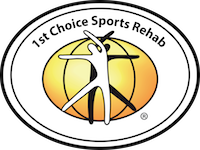Building Your Personalized Training Plan
by Lauren Cortjens, DC, CCSP
Deciding how to train for a goal, race, or distance can be confusing. How far should I run each day? Should I incorporate strength training? What’s all this buzz about “HIIT” training? How much should I increase my mileage each week? I’ve hit a plateau, how do I break through that?
Endurance training can be complicated, but it can also be immensely rewarding, and the benefits can be achieved in a relatively short time frame – perhaps by your next race. Follow the guides below, and you’ll be well on your way.

Deciding how to train for a goal, race, or distance can be confusing. How far should I run each day? Should I incorporate strength training? What’s all this buzz about “HIIT” training? How much should I increase my mileage each week? I’ve hit a plateau, how do I break through that?
Endurance training can be complicated, but it can also be immensely rewarding, and the benefits can be achieved in a relatively short time frame – perhaps by your next race. Follow the guides below, and you’ll be well on your way.
First, you need to have a goal in mind. Find a race or time/distance goal you want to achieve by a particular date. Make sure the goal is reasonable and attainable. Starting from the couch and hoping to do an Ironman in two months is not reasonable. However, a 5k or 10k in that same time frame would be an excellent choice.
Next, figure out your starting point and how you want to achieve your goal. What motivates you? What is your weekly schedule? You are more likely to follow through on your training if it doesn’t interfere with your regular schedule too much. You must make small sacrifices along the way. However, be wise, and understand your time constraints. Training takes time away from life’s other responsibilities. So planning a long run on a weekend when you have multiple other essential activities is a formula for failure.
Write your schedule down, and plan your options accordingly. Maybe you can wake up early one morning, or workout at your lunch break, then eat lunch at your desk or let the kids stay at daycare a little longer if you can swing that so that you can get in a short workout. Everyone knows endorphins are good for the soul.
Next, decide how to execute your plan appropriately. Most endurance athletes do exceptionally well on an 80/20% approach where 80% of training is made up of lower intensity, more extended efforts, and 20% is higher in intensity, interval style efforts. Two real interval type sessions a week in your chosen sport, two HIIT style workouts, then the remainder as longer, slower efforts, either at tempo pace or Zone 1-2.
I find a 70/30 style approach works best for me since I am a full time working mom with two small children. Therefore, shorter training sessions are more attainable with my schedule. Recently, I trained for a 100-mile trail race in May and had two interval sessions, four strength sessions, and three tempo workouts per week. My schedule allows me to train efficiently but still have time for my family and perform at the level that I desire.
After you construct your schedule, you need to determine how much you can increase each week and still avoid Overtraining Syndrome. Listen to your body after each session, but the 10% rule is well-accepted and straightforward. Don’t increase your weekly mileage by more than 10% from the previous week. If you feel your body isn’t responding well and you are not recovering well from the previous session, then follow recovery protocols until you feel you can perform at your full potential.
Finally, most of us hit a wall while training. If you do, you’ll feel like you’re not improving even though you’re putting in the effort. If that happens, it’s time to take a step back and re-evaluate your methods. Alter your distances, or focus more on recovery methods after workouts. Nutrition is critical. So it’s important to keep a log of what you’re eating and how you feel so that you can look back and decide whether your nutrition is appropriate or inadequate and therefore responsible for your plateau. Don’t discount off days spent doing mobility, yoga, or absolutely nothing at all. It is acceptable to go a whole day without working out!
Everyone responds differently to different training methods. For me, the shorter bouts of training leave me more time with my family, while allowing me to perform and train injury free. Maybe you will have a better result from training at those longer distances. Hiring a coach to help you figure this out is a great option. A good coach can evaluate all aspects of your schedule, nutrition, training, and recovery to enhance your performance for your goal. Now go train!
Dr. Lauren Cortjens is an endurance athlete with a passion for helping others achieve their goals more efficiently. She competes in Ultramarathons and has developed unique training programs that have been successful for her and other athletes she trains. You can view those plans at www.garundoc.com.

Dr. Lauren Cortjens is an endurance athlete with a passion for helping others achieve their goals more efficiently. She competes in Ultramarathons and has developed unique training programs that have been successful for her and other athletes she trains. You can view those plans at www.garundoc.com.
.
Decatur Office
2545 Lawrenceville Hwy
Suite 100
Decatur, GA 30033
404-377-0011
fax 770-939-9353
Johns Creek Office
9810-B Medlock Bridge Rd
Suite 104
Johns Creek, GA 30097
404-300-9931
fax 770-939-9353
